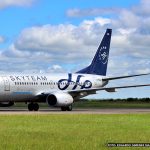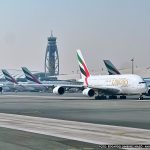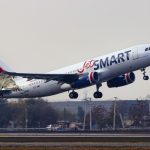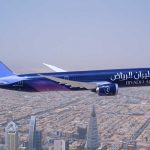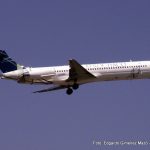After more than a decade of partnership, Virgin Atlantic will end its association with Delta Airlines in 2022. Since 2011 both airlines were part of a Joint Venture in the transpacific market to strengthen connections between the United States and Australia. As part of the Australian airline’s bankruptcy restructuring, they opted for a new partnership with United Airlines, the largest U.S. carrier in the Asia-Pacific region.
«We would like to thank Delta Airlines for their commitment and long-standing relationship with Virgin Australia. As a strategic partner of Virgin Australia for many years, Delta Airlines has shared a wonderful journey with us and we cherish and value the many benefits we achieved together» said Jayne Hrddlicka, CEO of Virgin Australia Group.
«We will be working closely with Delta over the coming months to smoothly transition our Velocity partnership and all bookings will still of course be honored when Delta customers fly on Virgin Australia» added Hrdlicka.
Early Partnership
On July 1, 2009, Delta Airlines commenced daily flights between Los Angeles (LAX) and Sydney (SYD) on Boeing 777-200LRs, a new milestone thanks to its partnership with Virgin Australia. During the same year, the Australian airline landed with non-stop flights to the United States operated on Boeing 777-300ERs.
Expanding their collaboration, the two airlines announced a Joint Venture with the aim of offering their customers a greater choice of travel between the United States, Australia and the South Pacific, across both airlines’ network of destinations.
This new alliance enabled Virgin Australia and Delta to compete against large-scale carriers such as United and Qantas, both market leaders in the U.S. and Australia.
DOT approval of the Joint Venture
The United States Department of Transportation (DOT) approved the Virgin Australia-Delta Airlines Transpacific Alliance Joint Venture in June 2011, allowing both airlines to extend their codeshare, increase frequent flyer program benefits and offer more lounge access.
With the start of this new Alliance, Delta Airlines customers from Sydney could connect to Brisbane (BNE), Melbourne (MEL) Perth (PER), Adelaide (ADL) and Canberra () from Australia, and to Auckland (AKL) and Christchurch (CHC), Virgin Australia customers via Los Angeles (LAX) could also connect to San Francisco (SFO), Las Vegas (LAS), Atlanta (ATL), Detroit (DTW), New York (JFK) and Orlando (MCO).
Growth in the Pacific
In 2015 Australian government regulators reauthorized the alliance between Virgin Australia and Delta Airlines until 2020, and both carriers by that time represented 25% of the seating capacity between the United States and Australia.
Both airlines were consolidating their operations in the market, offering almost 50 destinations between Australia and New Zealand and 230 in the United States, Mexico, and Canada. This alliance offered up to 25 weekly flights: Delta with daily service between Los Angeles (LAX) and Sydney (SYD) on Boeing 777-200LR and Virgin Australia operated 18 weekly flights between Sydney (SYD), Melbourne (MEL), and Brisbane (BNE) to Los Angeles (LAX), all operated on Boeing 777-300ERs.
On Delta’s 10th anniversary in Australia, the U.S. carrier refurbished its Boeing 777-200LR cabins on the Los Angeles (LAX) and Sydney (SYD) route, which featured its new Delta One Suites, Delta Premium Select, Delta Comfort+ and Main Cabin products. Virgin Australia, meanwhile, refurbished all cabins on its Boeing 777-300ER fleet with new Business Class and Premium Economy products, as well as a new lounge bar on the aircraft.
Final moments
With the outbreak of the COVID-19 pandemic, both airlines were heavily affected by the strict sanitary restrictions imposed by the Australian government. Virgin Australia was forced to withdraw its entire fleet of wide-body aircraft, ending all long-haul operations to concentrate on the domestic market, and Delta was forced to suspend operations to Australia.
In September 2020, the two airlines discontinued the Joint Venture due to the uncertainty of restarting international travel. That same month Delta Airlines resumed operations between Los Angeles (LAX) – Sydney (SYD) with three weekly flights operated on Airbus A350-900: the change of equipment is explained by the complete retirement of the company’s Boeing 777 fleet.
In December 2021, Virgin Australia announced the end of the alliance with Delta, after launching a new partnership with United Airlines. The Australian airline still has no plans to restart long-haul operations and will focus on offering international destinations through partners with a fairly wide network of destinations.
Despite the end of the alliance with Virgin Australia, Delta will continue to offer flights to Australia although the airline’s market position has a major disadvantage: Oneworld partners with American Airlines and Qantas have a transpacific joint venture, and they also count Fiji Airways, a Oneworld Connect member. United Airlines also has an alliance with Star Alliance partner Air New Zealand, which reinforces its position in the South Pacific region.
With the opening of borders in Australia, the market has been recovering slightly and other competitors are preparing to reactivate the offer of flights between the United States and Australia. Delta is in a critical position without Skyteam partners or another codeshare airline, which means the airline could concede to other major competitors and abandon a major profitable market.




